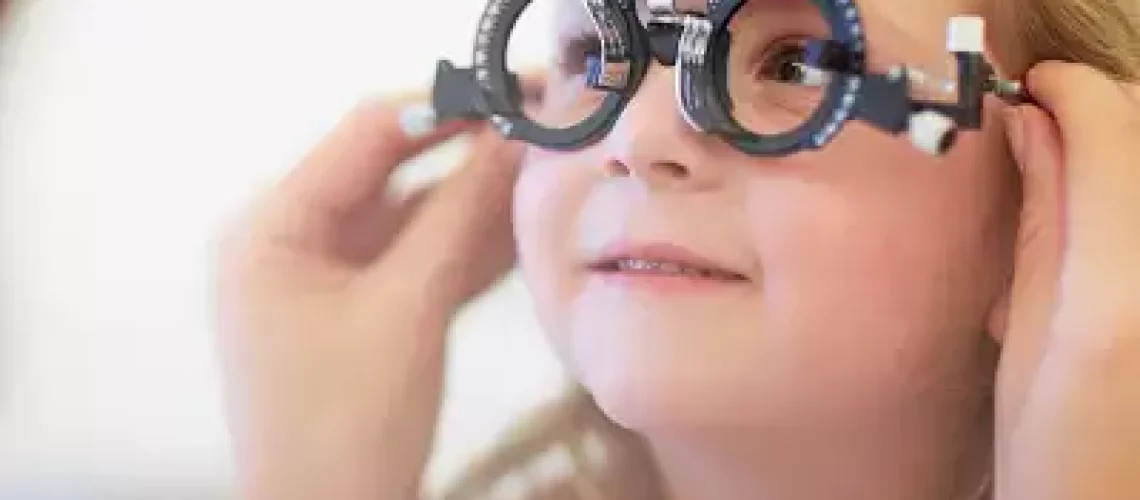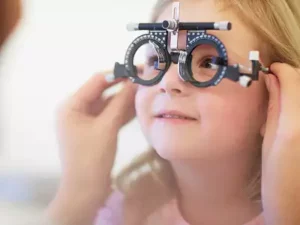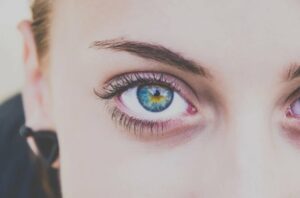Myopia, often known as nearsightedness, is a refractive defect that impairs one’s ability to see objects at a great distance. Young people nowadays are experiencing it at alarming rates. Common questions, causes, treatments, and preventative measures for childhood myopia are discussed in this article.
Why do kids get myopia?
Myopia is a frequent refractive error that improves near vision but worsens far vision. Myopia is most common in children, typically appearing between the ages of 5 and 10, worsening during childhood and adolescence, typically up to the age of 18, and possibly continuing to worsen in the most extreme cases until after the age of 25.
Symptoms
The inability to see far away is one of the first signs. Parents may have noticed their children squinting at things in the distance.
Early detection of this issue requires a comprehensive ophthalmological/optometric examination of all children between the ages of three and four, when they begin to cooperate with the visual acuity assessment. Myopia can be predicted at this age, before symptoms appear, and an early, more successful treatment can be prescribed.
Causes of Myopia in Kids
- Myopia has been linked to genetic predisposition because it has a strong familial clustering pattern.
- Myopia may be exacerbated by environmental factors like spending too much time reading or staring at a screen close up.
- Reduced Time Spent Outdoors: Myopia risk has been linked to reduced exposure to natural light and reduced time spent outdoors.
What can I do so that my son’s diopters do not increase?
Every day, thousands of parents ask professionals, like ophthalmologists and optometrists, the same question. You couldn’t say anything but “Nothing” until lately. But in the last few years, two important lines of study have shown that myopia can be stopped without surgery and doesn’t change as much as what is set by genes.
Multiple scientific studies over the last 15 years have shown this to be true. Because of this, we think it’s important for parents to take their kids to the ophthalmologist and for each case to be looked at individually, with the goal of not increasing the diopters in children and preventing the development of high myopia.
Parents and scientists are very interested in slowing down the rate at which myopia gets worse in children. This is because we are facing the so-called “myopia epidemic”.
How do you keep kids from getting nearsighted?
The most important thing is to check the eyes of all children between the ages of 3 and 4 to find myopia as soon as it starts to show up. This is even more important if nearsightedness or other eye problems run in your family.
How to help kids who have myopia:
- Eyeglasses: If you have nearsightedness, prescription eyeglasses can help you see clearly far away.
- Contact lenses: Older kids and teens can choose either rigid gas-permeable or soft contact lenses as an option to eyeglasses.
- Orthokeratology (Ortho-K): For this treatment, the cornea is briefly reshaped by wearing special rigid contact lenses overnight. It lets you see clearly during the day without having to wear glasses or contacts.
- Multifocal eyeglasses or contact lenses have different zones for near and far vision. In some cases, these lenses can help slow the development of myopia.
- Refractive Surgery: Because of age limits, refractive surgeries like LASIK or PRK are less popular in children, but older teens with stable myopia may want to think about getting them.
How can I stop it?
There is no good way to stop blindness from happening. A child’s genetics will play a big role in whether or not they get nearsightedness. If one of your parents is nearsighted, you may also be nearsighted. If both of your parents are nearsighted, your chances are even higher. The degree of nearsightedness of the parents is also a factor. Parents with high or high nearsightedness (more than 6 diopters) are more likely to have nearsighted children.
Sun exposure, mainly at an early age of the child, has been seen as a protective factor for myopia. In general, it has also been seen that more time outdoors and greater light exposure are also protective factors for myopia.
How to treat nearsightedness in kids?
The current treatments for myopia don’t “remove diopters”; instead, they slow the development of the condition. We can’t “remove diopters” of myopia, but we can stop it from getting worse. Because of this, it is important to start these treatments early, because they will work better the sooner they are started.
The mind of a nearsighted child
In recent years, a lot of attention has been paid to the psychology of myopic children, and it has been found that they don’t like how they look and don’t take part in group activities, especially sports, as much as other kids do. That is, the child with myopia tends to do less of some things and more of others that require close vision, like playing video games alone.
In this way, both their self-perception of their physical appearance and the amount of sports and social activities they do decrease. This means that scientifically planned tests show that children under 12 with myopia and glasses have a lower quality of life, even though this isn’t true. Not every child has the same reaction to a real psychological problem.
During a child’s growth, just as his body grows, so does the axial length of his eyeball. This makes the myopia diopters go up and the disease get worse. That’s why it’s important to catch myopia early and find a way to stop the diopters from getting worse while the child is still growing.
Prevention Methods for Myopia in Kids:
- Outdoor Time: Encouraging children to spend more time outdoors, especially during daylight hours, has been associated with a reduced risk of myopia.
- Limiting Near Work and Screen Time: Encourage regular breaks during reading or close-up tasks, and limit screen time to prevent excessive eye strain.
- Proper Lighting and Ergonomics: Ensure that the study area is well-lit and provide appropriate reading distances and angles.
- Eye Exams: Regular comprehensive eye exams can help detect myopia early and allow for timely intervention.
- Low Myopia Correction: Under certain circumstances, some eye care professionals may recommend a partial correction of low myopia to help slow down its progression.





